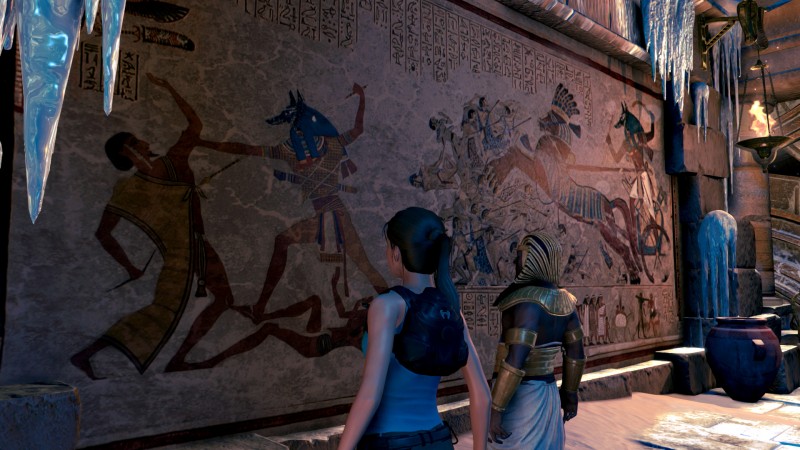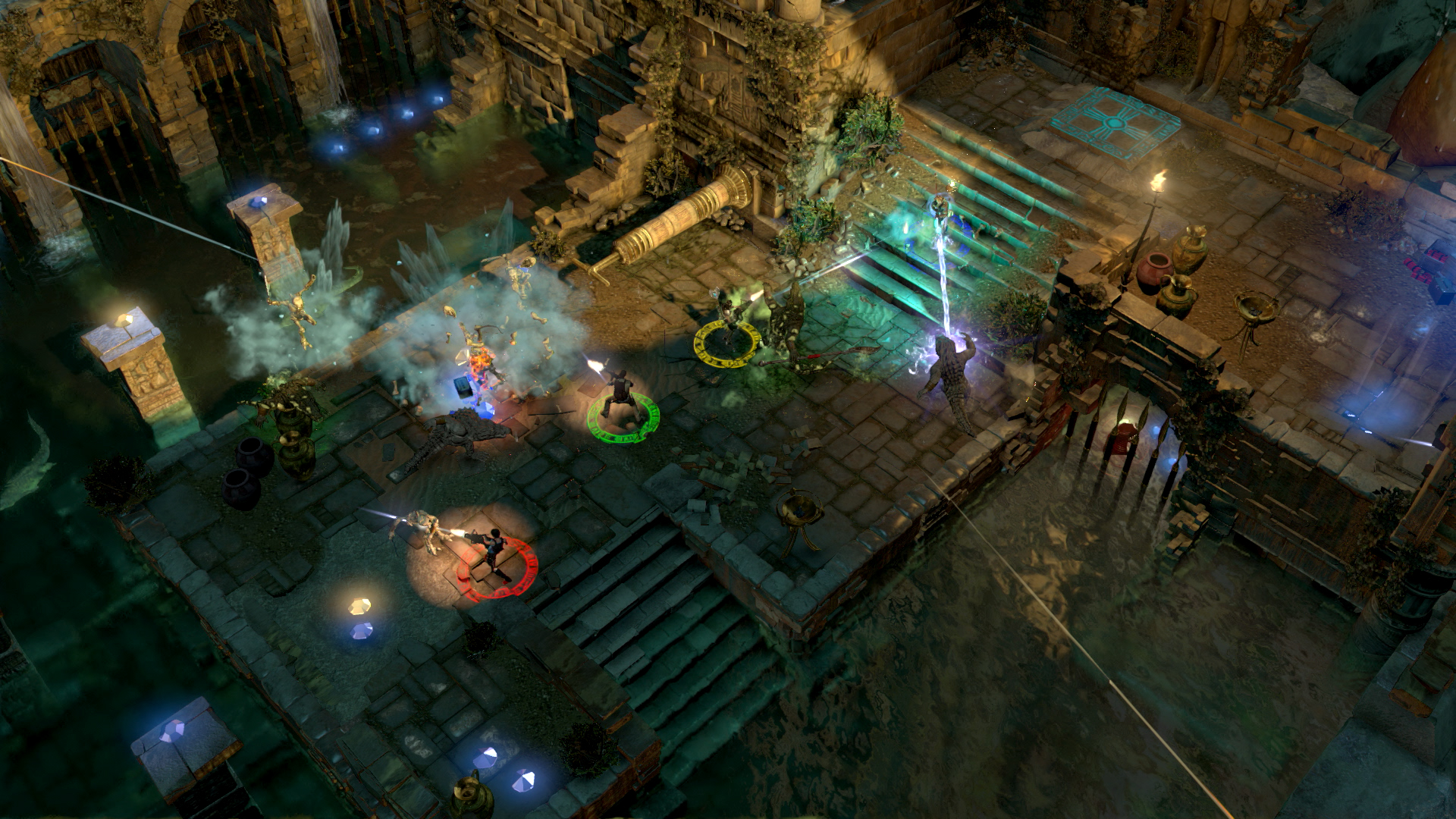Lara Croft is one of the most iconic characters in video games. A couple of years ago, she was reinvented in a reboot of Tomb Raider that focused more on story and character development than the series ever had. Lara Croft and the Temple of Osiris is more like the Lara of the olden days. She’s smart and powerful, but the story isn’t terribly unique or interesting. A sequel to the well-received Lara Croft and Guardian of Light, Temple of Osiris offers a great opportunity for up to four players to play together, but its isometric perspective (a bird’s eye view of the characters and environment at an angle with a fixed camera) could trip up those who aren’t well versed in platforming games.
Story
In Temple of Osiris, Lara and her rival archaeologist Carter Bell arrive at the ancient Egyptian Temple of Osiris at the same time, hoping to claim the same prize—the Staff of Osiris. When Carter grabs the Staff, he sets off a trap and unleashes a curse on both of them. They’ve also released the evil god Set, who is determined to return to the living world and enslave humankind. But it’s not all bad; the Staff has also released Isis and Horus, the wife and son of Osiris. They join Lara and Carter on their mission to destroy Set and break the curse by retrieving the remains of Osiris, which Set scattered in tombs around the temple.

Some of the story is told through hieroglyphics.
Though I wouldn’t go so far as to call Lara Croft and Temple of Osiris educational, the story is based in real Egyptian myth. Osiris, Set, Isis, and Horus are all prominent figures in that mythology, and the background given in the game is true to some of the versions of the myth that are known today. These snippets are told in cutscenes showing a battered journal with writing and drawings or when the players come upon hieroglyphics in some of the tombs.
Gameplay
Like its predecessor, Temple of Osiris is a platforming and puzzle game set in an isometric perspective. While up to four players can play at the same time—online or off—the game can also be played by one person. The gameplay involves navigating a number of tombs by jumping from platform to platform, solving environmental puzzles, and dispatching enemies with a variety of weapons. Players make use of the Staff of Osiris to manipulate elements of the environment in order to progress. In traditional Tomb Raider fashion, there are a number of areas that involve attaching to and swinging from a grappling hook.

Environmental puzzles, such as this one, which involves positioning mirrors, are a large part of the gameplay.
Each main tomb has built-in challenges, such as achieving a certain score, completing the tomb in a certain amount of time, or completing a specific objective like impaling a number of enemies on spikes. These challenges are shown before you start every tomb, so you can try to accomplish them on your first playthrough. Besides the main tombs you need to explore, there are also “challenge tombs” that have additional puzzles, as well as a number of collectibles scattered throughout all of the tombs and the main temple area. The puzzles in the main tombs aren’t terribly difficult, but the challenge tombs are a different story. As someone who really enjoys environmental puzzles, I was happy that the game provided more opportunity to use my brain than what was available in the main storyline. Even if you complete the main storyline, you can go back to any area of the game and replay it to earn more collectibles.
The platforming element of the game is challenging not only because it requires quick reflexes and precise jumps, but also because the game’s visual perspective and locked camera angle make it difficult to line up your jumps properly. While experienced gamers will probably get the hang of it fairly quickly, younger and newer gamers will likely be frustrated by the need to repeat areas multiple times. That said, the game, like many games these days, is very generous with checkpoints, so you rarely lose a lot of progress for failing to land a jump.

Up to four players can all play together either online or offline.
In addition, one of the interesting things about this game is that the levels change based on whether you’re playing by yourself or not. For example, some areas require a group to work together to navigate them. These areas are slightly modified in single-player, usually by adding in a grappling hook. Playing with other people really is the best way to experience this game, and being able to play when you’re all in the same room looking at the same screen is a big plus for families interested in gaming together.
The ESRB Rating
Lara Croft and the Temple of Osiris is rated T for Teen with content descriptors for Mild Blood, Mild Language, and Violence. Although you use weapons like machine guns, flamethrowers, and bombs, all of the enemies you fight are fantastical creatures, including skeletons, giant scarab beetles, and anthropomorphic crocodiles. The battered journal in the cutscenes has drops of blood on some of the pages, and you can see a bit of blood when enemies are defeated. The only profanity is the word “bastard.”
Takeaway
Lara Croft and Temple of Osiris could be a good game for families to play together if everyone is fairly experienced with platforming games. If not, it could prove very frustrating. However, solving puzzles together can be lots of fun and offers a great opportunity for communication and cooperation. Overall, I enjoyed playing it, but I wasn’t blown away by it.


